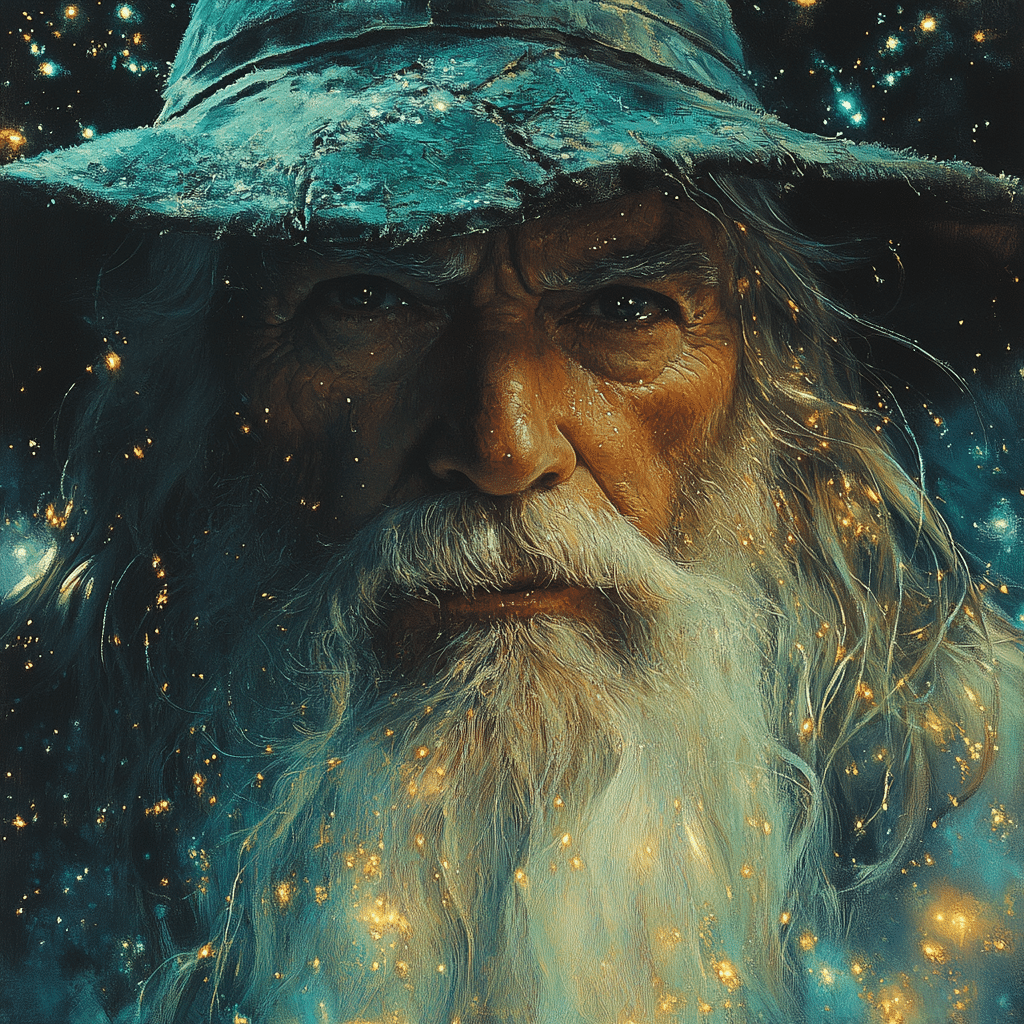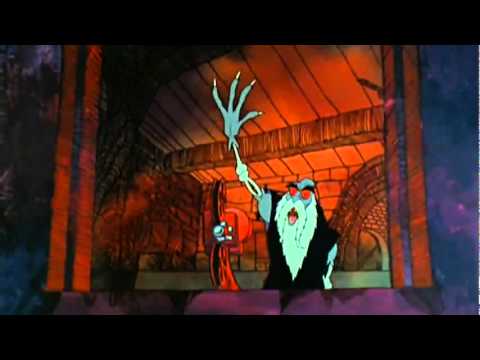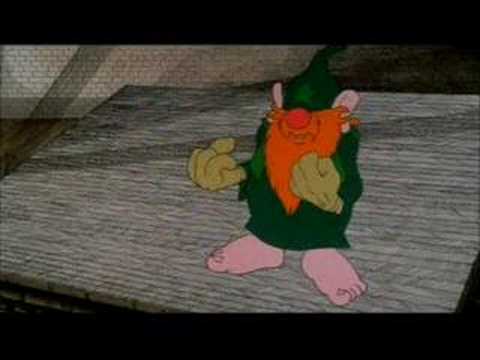
Wizards 1977 Captivates With Intense Animation And Dark Themes
The Enduring Legacy of Wizards 1977: A Cultural Phenomenon
In the ever-expanding landscape of animated films, Wizards, directed by Ralph Bakshi in 1977, firmly establishes itself as a noteworthy example of both artistry and storytelling. Unlike the pastel-colored animations that dominated children’s movies of the time, Wizards dives into a darker realm, intertwining intense violence with surreal themes. Set against the backdrop of a post-apocalyptic world, the nuances of this film resonate deeply with contemporary social issues, becoming increasingly relevant in today’s cinematic landscape. The film’s intricate storytelling and unique visual style laid the groundwork for future indie projects that continue to push the boundaries of animated storytelling.
Wizards showcases both the imagination and creativity that were hallmarks of the late 1970s. This period saw filmmakers like Ralph Bakshi experimenting with animation’s potential, using it as a means to tackle concepts often relegated to live-action. As the 21st century unfolds, the importance of Bakshi’s work shines brightly as filmmakers explore similar themes, reminding us that animation can—and should—engage with the grittier aspects of human existence.
Moreover, Wizards draws attention to issues like the realities of war, identity, and technology’s influence, mirroring today’s dialogues around tech ethics and global conflicts. These themes resonate through other notable works of the time, including Heavy Metal and even contemporary projects that use animation as a versatile medium for serious discourse. The lasting impact of Wizards sets a cultural precedent, challenging the norms of animated storytelling while inviting audiences to reflect on their existential realities.

Top 5 Chilling Themes in Wizards 1977
Delving into Wizards, we can pinpoint five distinct areas where the film excels in conveying dark concepts that linger in the minds of viewers long after the credits roll.
1. The Battle Between Good and Evil
In Wizards, the timeless struggle of good versus evil takes center stage in a vividly imagined post-apocalyptic landscape. Characters like Avatar and Blackwolf embody this clash, echoing conflicts seen in modern-day epics like The Lord of the Rings or Star Wars. Yet, Bakshi reframes these heroic archetypes within a countercultural lens that feels raw and unfiltered.
2. The Horrors of War
Celebrating or romanticizing war has been a recurring theme in films throughout cinematic history. However, Bakshi’s tactile portrayal of war-torn environments critiques this glorification. The faded history and ashen visuals poignantly speak to the anxieties surrounding conflicts like the Vietnam War, drawing parallels to the profound examinations found in films like Platoon.
3. The Role of Technology in Society
Wizards presents technology in a dualistic light, showcasing its potential to both create wonders and inflict devastation. This cautionary tale finds itself deeply rooted in our current concerns over technology’s growing dominance in daily life. Similar sentiments echo through recent narratives, like those in Ex Machina, where the ethical implications of AI emerge vividly.
4. Transformation and Identity
Identity plays a vital role as characters strive to find their places within this fantastical society. The exploration of self and personal evolution is akin to indie films such as Lady Bird. Just like Lady Bird grapples with her identity, the denizens of Wizards navigate their roles amidst chaotic adventures, reflecting the universal quest for self-discovery.
5. The Use of Animated Artistry to Address Serious Issues
Bakshi’s distinctive animation style becomes a vehicle for tackling daunting themes. The raw visuals complement character arcs and narratives, rendering an experience quite unlike mainstream animated films. Today’s animators, like Tokyo Leigh, similarly embrace their craft to explore profound storytelling, drawing inspiration from the boldness Wizards introduced.
The Impact of Woodstock, IL on Wizards 1977
Nestled in Woodstock, Illinois, the groundbreaking Wizards found fertile ground for its creative explosion. The spirit of freedom and experimentation that surged through the 1960s and 1970s counterculture infused Bakshi’s animation studio. This small town became a haven for original underground films, where themes of rebellion and awareness flourished—an atmosphere Bakshi artfully harnessed to enrich his storytelling.
It’s fascinating to consider how Woodstock’s counterculture scene shaped the ethos of Wizards. Creative minds, much like those working on Ragatha Digital circus, gravitated towards challenging societal norms through art. Bakshi’s work felt at home amidst this climate, where rejection of the mainstream spurred innovative narratives that embraced darker themes.
The cultural impacts of Woodstock have a lasting legacy, as many creatives have cited this environment as a catalyst for their work. This spirit echoes today, inspiring up-and-coming filmmakers who wish to navigate outside the boundaries of typical storytelling, creating stories filled with grit and depth akin to what Wizards achieved.

Influences of Iconic Figures: From Lexington Steele to Mustafa Ali
Various influential figures have emerged from disparate realms that share surprisingly harmonious elements with Wizards. Lexington Steele, an adult film star known for pushing against industry standards, infused his narratives with themes of fantasy and rebellion. Just like Bakshi, Steele wasn’t afraid to tackle societal taboos, mirroring the boldness found in Wizards.
Mustafa Ali, renowned within the professional wrestling world, also embodies a resilient spirit against overwhelming odds. The stories he weaves in the ring resonate with the struggles depicted in Wizards—the fight against a seemingly unstoppable evil. Both figures exemplify how multifaceted narratives can arise from diverse backgrounds, intersecting with common themes of strength, defiance, and the battle for justice.
Notable Comparisons
These examples underline the rich interplay between various forms of media, revealing how interlinked narratives can reveal broader cultural struggles. They serve to illustrate that challenges faced by characters in Wizards permeate across genres and platforms.
Modern Interpretations: From Indiana Evans to Yukon Cornelius
The influence of Wizards resonates in modern narratives, extending its reach to new artists like Indiana Evans, who uses her distinctive storytelling techniques to draw parallels with Bakshi’s work. Her projects often reflect complex themes and emotional depth, echoing the layered narratives Bakshi pioneered in his time.
Meanwhile, Yukon Cornelius, though hailing from a different tradition, embodies themes of adventurism and exploration familiar to Wizards’ journey. He reinforces the idea of seeking knowledge and navigating realms far beyond everyday life, capturing the spirit of adventure that Wizards instills in its viewers.
These modern interpretations bridge the generational gap, illustrating how the legacy of Wizards continues to influence storytellers today. This ongoing dialogue across time reinforces that compelling narratives about identity and transformation will always find a place in animation.
A Cinematic Evolution: The Lasting Impact of Wizards 1977
Reflecting on the legacy of Wizards, it’s evident that Ralph Bakshi’s groundbreaking work captivated audiences in 1977 while paving the way for future generations of animators and storytellers. This animated feature elegantly explores complex, dark themes against a backdrop of vivid artistry. Over four decades later, its echoes are still felt, as the conversation around animation’s role as a serious art form continues to thrive.
The film’s capacity to provoke thought and reflection encourages viewers to question their surroundings rather than simply accept them. This principle remains vital today, reminding us all that animated storytelling can challenge societal norms and deliver poignant messages wrapped within creative packages. The narrative threads and visual style of Wizards not only inspire dialogue today but also urge filmmakers and viewers alike to explore the limits of their creative expression.
As we forge ahead, it’s essential to remember that films like Wizards can offer more than just entertainment—they empower us to reflect on the power of storytelling. In doing so, they continue to encourage upcoming voices in animation to engage deeply with the themes of their time, fostering a richer appreciation of the artistry involved. Whether it’s through the lens of intimacy seen in modern works or the daring visuals of Bakshi’s creations, animation holds an unmatched potential for profound discourse.
Fun Trivia and Interesting Facts about Wizards 1977
The Animation Style That Stands Out
“Wizards” (1977) is a captivating blend of animation styles, representing the innovative spirit of its time. Directed by Ralph Bakshi, the film remarkably juxtaposes traditional hand-drawn techniques with rotoscoping, leaving a lasting impression in the animation community. This unique approach is reminiscent of how other shows, like in Greenhouse Academy, have pushed creative boundaries to engage audiences. Furthermore, Bakshi inspired future generations of animators, proving that creators like him could captivate viewers with dark themes interwoven with fantasy.
Cultural References and Inspirations
One of the most fascinating aspects of “Wizards 1977” is its commentary on war and peace. The film takes a deep dive into the consequences of technological advancement and the philosophical struggles that arise. When watching, you might notice clear nods to various mythologies and folklore, much like the references seen in series such as Hanako San, which draws on similar themes of enchantment. Bakshi’s blend of dark, dystopian elements with light-hearted moments creates a contrast that resonates across genres—just as in the whimsical aspects of One Piece gaimon, albeit in a different storytelling context.
The Voices Behind the Magic
The film features notable voice work that adds depth to its vibrant characters. Veteran voice actors like Peter Hahn and Susan Tyrell brought the characters to life with an intensity that leaves audiences pondering the tale long after the credits roll. In a similar vein, actors like Claire van Der Boom continue to demonstrate that strong performances can enhance a narrative, regardless of the format. Plus, the film’s legacy can even be seen in contemporary pop culture, where dark animated features have found a niche among fans—mirroring what we see today in genres that play with similar themes, making it a highlight in independent filmmaking history.
Overall, “Wizards 1977” is a rich tapestry of storytelling, art, and cultural commentary, demonstrating how animation can delve deep into serious topics while still entertaining. Much like the fluctuating average mortgage rates today can be a barometer for economic health, the film serves as a snapshot of societal concerns of its time that still resonate today. Just as home mortgage rates can tell us about stability in the real estate market, Bakshi’s film hints at our fears and hopes in an animated form that stands the test of time.

Is Wizards 1977 for kids?
Wizards isn’t exactly for kids, even though it’s Ralph Bakshi’s first film aimed at younger audiences. It has intense, violent scenes, mild adult language, and some dark themes that are more appropriate for older viewers.
Is the movie Wizards streaming anywhere?
You can stream Wizards by renting or buying it on platforms like Apple TV, Amazon Video, Fandango At Home, and Microsoft Store.
Is Wizards a good movie?
Whether Wizards is a good movie or not really depends on personal taste. It’s a unique animated feature and while the story might be a bit messy and the characters not fully developed, its gritty style and fresh score can be quite engaging.
What is the film Wizards about?
Wizards tells the story of two wizard brothers, Avatar and Blackwolf, who are on opposite sides of a conflict that includes heavy surrealism and intense battles, stepping away from typical sword and sorcery tales.
At what age can a child watch the Wizard of Oz?
Kids can watch The Wizard of Oz from around the age of six, but it’s often best to decide based on the individual child’s comfort with fantasy themes and mild scares.
What rating is wizards?
Wizards is rated PG, which means it’s suitable for a general audience but parental guidance is advised due to some content.
Who was the narrator on the movie The Wizards?
The narrator of Wizards is a character named “The Narrator,” voiced by the legendary filmmaker Ralph Bakshi himself.
Is the wizard streaming anywhere?
You can find The Wizard streaming online on various platforms, so check your favorite service to catch it.
Who made Wizards in 1977?
Wizards was created by Ralph Bakshi, who is known for his unique and sometimes controversial animated films.
Is The Wizard good or bad?
Whether The Wizard is good or bad is subjective; it has its fans and critics, so it really depends on what you’re looking for in a film.
Have the wizards ever been good?
Wizards have always had a mix of good and bad characters throughout stories and folklore, often representing the battle between light and darkness.
Is The Wizard of Oz rated?
The Wizard of Oz is rated G, which makes it suitable for families and children of all ages.
What is Wizards 1977 rated?
Wizards from 1977 has a PG rating, so it suggests parent discretion due to some thematic elements.
Where does the Wizards movie take place?
Wizards takes place in a post-apocalyptic world where magic and technology clash, featuring a mix of fantasy and surreal landscapes.
What is the spin off prequel to Harry Potter?
The spin-off prequel to Harry Potter is Fantastic Beasts, which explores the wizarding world before Harry’s time.






![WIZARDS Official Trailer [1977]](https://www.loaded.video/wp-content/cache/flying-press/S5vOLSBI9So-hqdefault.jpg)





